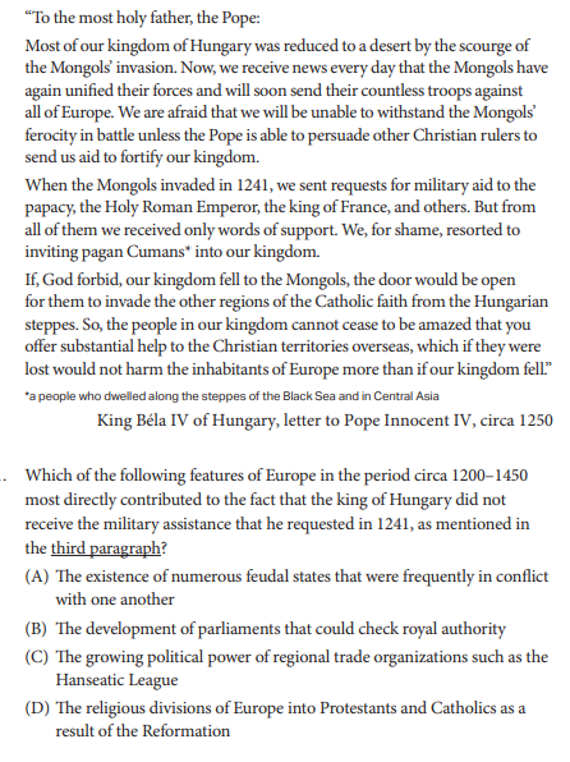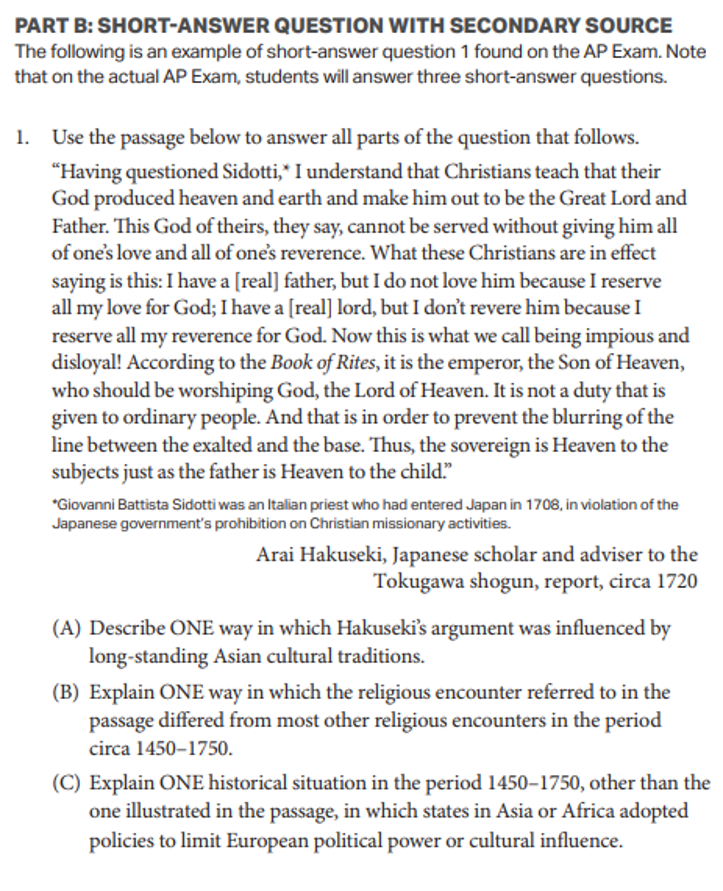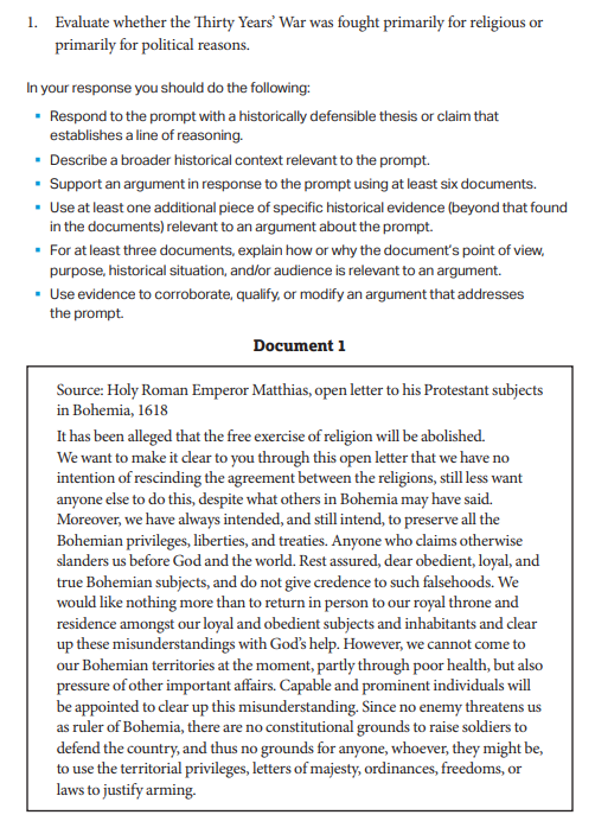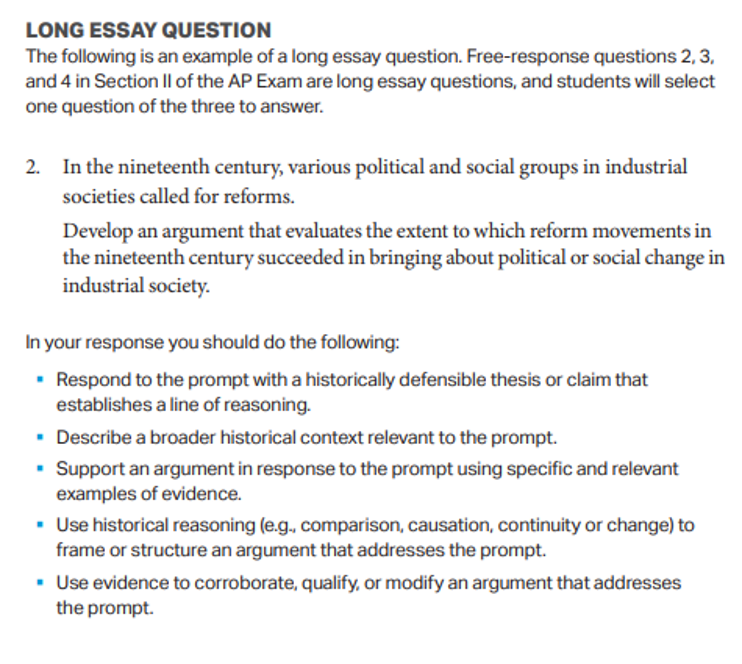Ultimate Guide to the AP World History Exam
The AP World History exam is one of the more popular AP exams among self-studiers and enrolled students alike. In 2019, over 300,000 students took the AP World History exam, making it the fifth most taken AP exam. If you are interested in taking the AP World History exam, read on for a breakdown of the test and CollegeVine’s advice for how to best prepare for it. Note: beginning in the 2019-2020 school year, the College Board is changing the AP World History exam so that it no longer covers ancient history. The exams now formally called AP World History: Modern, with a new course covering ancient history in the works. AP World History: Modern will only involve history from the year 1200 to the present. This means that you should skip any practice questions involving history from before 1200 in any study materials, as that content will not be covered on the exam. The 2020 AP World History exam will take place on Thursday, May 14, at 8 am. For an up-to-date, comprehensive list of AP exam times, check out our blog 2020 AP Exam Schedule: Everything You Need to Know. The AP World History course investigates significant events, individuals, developments, and processes in world history from 1200 to the present. In this class, you will develop your ability to analyze historical sources and develop historical arguments. You will do this by honing historical thinking skills, including: In addition to developing historical thinking skills, you will also explore six primary themes: The AP World History course is generally divided into nine units. Below is the common structure of the AP World History Course with the percentage of the exam each unit represents. The World History AP exam is one of the longer AP exams, clocking in at three hours and 15 minutes. It is comprised of three sections: multiple choice, short answer, and one final section for the document-based question (DBQ) and long essay. Section 1: Multiple Choice 55 minutes | 55 questions | 40% of score Section 1 takes 55 minutes, contains 55 multiple-choice questions, and accounts for 40% of your total score. Questions test your ability to analyze historical texts, interpretations, and evidence. Typically, questions come in sets of three to four which use the same primary and secondary sources. Section 2: Short-Answer Questions 40 minutes | 3 questions | 20% of score Section two contains three short-answer questions, takes 40 minutes, and accounts for 20% of your total score. Section 3: Free Response 1 hour 40 minutes | 2 questions | 40% of score The final section consists of two long-answer responses: a document-based question and a long essay. The DBQ spans one hour (including 15 minutes of reading time) and accounts for 25% of your score. The long essay gives two choices of prompts, from which students must choose one and complete it in 40 minutes. The long essay accounts for 15% of your score. Students familiar with the AP U.S. History or AP European History exams will benefit from knowing that the exam format and scoring rubric are exactly the same. The AP World History exam is a tough one to crack, largely because of the breadth of material covered in the exam. In 2019, 55.3% of students who took the AP World History exam received a score of 3 or higher. Only 8.6% of students received the top score of 5, while 15.8% scored a 1 on the exam. Only Physics I, English Literature, Italian Language, and Seminar had lower percentages of students scoring a 5. Keep in mind, credit and advanced standing based on AP scores varies widely from college to college. Always check with the schools on your list for their AP policies. A full course description that can help guide your studying and understanding of the knowledge required for the test can be found in the College Board course description. The College Board AP World History website provides a number of sample test questions and exam tips. You’ll find an AP World History Practice exam from 2017 on the College Board’s website. An AP World History Practice exam from 2013 is also found on the College Board’s website; although the format of the 2013 exam is outdated, the core content remains the same, making it useful for identifying focal areas for studying. Practice tests are also found in many of the official study guides. The AP World History course develops your understanding of the world’s history through the span of approximately 10,000 years. Obviously this covers an enormous amount of material, so you should allow plenty of time to prepare. Material for the course is divided into six themes: Throughout the course, students use these themes to frame and connect historical developments in different times and places. You will need to learn significant events, people, developments, and processes from world history in four historical periods (1200 to 1450, 1450 to 1750, 1750 to 1900, and 1900 to present) and employ the thinking skills and methods used by historians to study the past. These include analyzing primary and secondary sources, making historical comparisons, chronological reasoning, and argumentation. Go to the Source: Unfortunately, there is no official practice test for the current AP World History exam, as the 2020 administration will be the very first iteration of the AP World History: Modern Exam. You’ll need to make do with the aforementioned 2017 AP World History exam; just be sure to skip any questions from before the year 1200. The College Board does, however, provide an extensive collection of example free-response questions (with commentary) on its website along with some additional sample questions in its official course description. The College Board also recommends World History Connected: the e-Journal of Learning and Teaching as a free web resource for those who want to deepen their engagement and understanding of world history. Ask an Expert: For a more specific idea of where to focus your studying, you should consider using an updated formal study guide. Both the Princeton Review’s Cracking the AP World History Exam, 2020 Edition and Barron’s AP World History: Modern are proven and reliable resources. Of these, Barron’s is regarded as the stronger option for long-term studying of the material, while the Princeton Review is often regarded as a better option for test practice (though some users say that its practice tests in the past have been more difficult than the actual AP exam). Task a Teacher: There are also a number of free study resources available online. Many AP teachers—such as Mrs. Gibson from East Aurora High School in New York—have posted complete study guides, review sheets, and test questions. Be careful when accessing these, as many will be from previous versions of the exam. Try a study app: Another convenient way to study is to use one of the recently-developed apps for AP exams. These can be free or cost a small fee, and they provide an easy way to quiz yourself. Make sure you read reviews before choosing one—their quality varies widely. Here’s a free AP World History app from Varsity Tutors, and another free AP World History app that’s highly-rated. Once you have your theory down, give it a try by practicing multiple-choice questions. You can find these in most study guides or through online searches. You could also try taking the multiple-choice section of another practice exam. The College Board Course Description includes many practice multiple-choice questions along with explanations of their answers. There are additional questions from the 2014 test available here. Again, be sure to skip any questions from before the year 1200, as those will not be on the updated exam. As you go through these, try to keep track of which areas are still tripping you up, and go back over this theory again. Focus on understanding what each question is asking and keep a running list of any concepts that are still unfamiliar. The AP World History exam is different from many AP exams in that it consists of five free-response questions of varying length and content. To be successful in these sections, you should know what to expect from each question. If you are already familiar with the free-response portions of the AP U.S. History or AP European History exams, you will find these similar in format. Short-Answer Questions: The first three free-response questions are considered “short answer,” and you will be allowed 40 minutes to complete them all. These questions tend to have multiple parts, with each being very specific and limited in scope. In this section, you will have an opportunity to explain the historical examples you know best. You will probably be asked to interpret a graph or figure, compare and contrast the effects of different cultural approaches from specific time periods, or list distinct precipitating factors of significant historical events. You should be able to answer each part of these questions in a short, succinct paragraph. Document-Based Question: To master the document-based question, you will need to carefully read the question, practice active reading skills while reviewing the documents, and make a strong outline before you begin to write. In this section, you will assess written, quantitative, or visual materials as historical evidence. Be sure to completely review the outline of requirements provided before the prompt, and check them off as you are outlining and writing your response. Long Essay: The long essay gives you the choice of three separate prompts, asking you to explain and analyze significant issues in world history and develop an argument supported by your analysis of historical evidence. Remember that you only need to answer one of them. As in the document-based question above, you will be provided with a rough outline of key considerations, including a strong thesis, application of your historical thinking skills, ability to support your argument with specific examples, and the synthesis of your response into a greater historical context. You will be asked to explain and analyze significant issues in world history and develop an argument supported by your analysis of historical evidence. For more details about how the document-based section and long-essay section are scored, review the College Board’s AP World History exam scoring rubric. Just like at the very beginning of your studying, take a practice test to assess your progress. You should see a steady progression of knowledge, and it’s likely that you will see patterns identifying which areas have improved the most and which areas still need improvement. If you have time, repeat each of the steps above to incrementally increase your score. If you’re taking the AP course associated with this exam, your teacher will walk you through how to register. If you’re self-studying, check out our blog post How to Self-Register for AP Exams. For information about what to bring to the exam, see our post What Should I Bring to My AP Exam (And What Should I Definitely Leave at Home)? As a student of world history, you’ll know that the past is often predictive of the future. Getting into college isn’t all that different. Our free chancing engine uses past performances represented in metrics like GPA and standardized test scores, along with other criteria such as extracurricular activities, to take the guesswork out of college admissions and tell you your odds of acceptance at over 500 colleges. Sign up for your free CollegeVine account today to get a boost on your college journey. Interested in learning more about AP exams? Check out some of our other great posts: When is the AP World History Exam?
About the AP World History Exam
AP World History Exam Course Content
Unit
Time Period
Percentage of Exam Score
The Global Tapestry
1200-1450
8%-10%
Networks of Exchange
1200-1450
8%-10%
Land-Based Empires
1450-1750
12%–15%
Transoceanic Interconnections
1450-1750
12%–15%
Revolutions
1750-1900
12%–15%
Consequences of Industrialization
1750-1900
12%–15%
Global Conflict
1900-present
8%-10%
Cold War and Decolonization
1900-present
8%-10%
Globalization
1900-present
8%-10%
AP World History Exam Content
Section
Number of Questions
Time
Percentage of Score
Multiple Choice
55
55 minutes
40%
Short Answer
3
40 minutes
20%
DBQ
1
1 hour
25%
Long Essay
1 (choice between three questions)
40 minutes
15%

Source: The College Board

Source: The College Board


Source: The College BoardAP European History Score Distribution, Average Score, and Passing Rate
Exam
5
4
3
2
1
AP World History
8.6%
18.8%
28%
28.8%
15.8%
Best Ways to Study for the AP World History Exam
Step 1: Assess Your Skills
Step 2: Study the Material
Step 3: Practice Multiple-Choice Questions
Step 4: Practice Free-Response Questions
Step 5: Take Another Practice Test
Step 6: Exam Day Specifics



